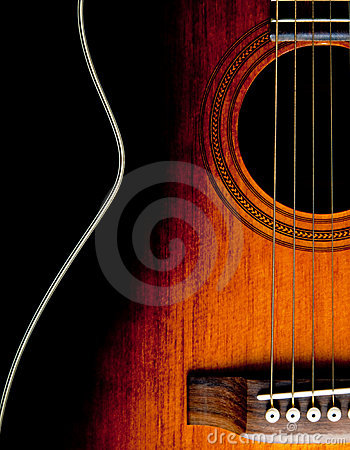Not all acoustic guitars are the same. There are a lot of differences and characteristics that set each and every guitar apart from the other. Some of these characteristics are really obvious, but some are more nuanced and require a bit more attention.
When you make a serious financial investment, such as buying a guitar, it’s important to make an educated buying decision.
The purpose of this guide is to give you a comprehensive overview of the things you should consider when buying an acoustic guitar or determining the quality of one. Here’s what we’ll be looking at.
Identifying Your Budget & Goals When you’re looking to buy an acoustic guitar, it’s really easy to get lost in all the options. As we move forward, you want to consider these few questions:
- How much do I have available to spend?
- How much would I be willing to save?
- What will I be using my acoustic guitar for? (e.g. just for fun, live performances, recording, etc.)
- What’s my style of playing? (e.g. heavy strummer, light strummer, fingerpicker, bluesy, folksy, etc.)
Start running these questions through your head. As you begin to answer these questions, you’ll be able to narrow down your options. We’ll look more in depth into these things as we move along.
The Main Things You Want to Look for Before we jump into the nitty-gritty details of acoustic guitars, when looking at buying a guitar, there are a few general considerations you must make.
1.) Cracks, Dents, & Bridge Separation. This might seem fairly obvious, but you want to make sure there aren’t any parts of the guitar that are cracking or have serious wear on the finish. Usually, this is uncommon for new guitars, but since most guitars in stores are available to be played by any customer, sometimes these guitars can fall off their stands and get bumped and scratched up. However, if you find a guitar that you like with a few scratches on it, you can also use this to your advantage. If you don’t mind having a guitar with a little “character” to it, stores and sellers will often knock down the price if you bring these scratches to their attention.
While scratches or scuff marks won’t affect the overall sound of the guitar, cracks are no good. Sometimes cracks aren’t very noticeable, so be sure you look over the entire instrument. You also want to make sure that the bridge is sitting fully flush with the top of the guitar and is not lifting up or cracking.
2.) Straight neck. With one eye open, give a good look down the neck from the bottom of the guitar to make sure that the neck isn’t bent, crooked, or warped in any way.
3.) Fretboard. As you move your hand up and down the guitar neck, do any of the frets stick out and rub your hand in an uncomfortable way? Sometimes the frets will hang over the edge of the fretboard and poke your hand. If you end up getting a guitar where this is a major problem, a luthier (someone who works on or builds guitars) should be able to sand these down for a fair price.
4.) Action. “Action” most simply refers to the space between the strings and the fretboard. If the action is too high, sometimes it is hard to press the strings down to the fretboard. If the action is too low, sometimes the strings will “catch” on other frets and create a buzzing sound when you are playing.
The action can be changed by either shaving down the nut, if the action is too high, or by filling in the nut with an epoxy if the strings are too low. Any guitar repair person can do this for you at a minimal cost, so don’t let this deter you from buying a guitar you really like.
5.) Neck size. The width of the neck is measured at the nut of the guitar. The width of necks will vary between manufacturers. For acoustic guitars, a standard neck width is somewhere in the neighborhood of 1-11/16 inch, 1-3/4 inch, and 1-7/8 inch. Typically, fingerstyle and classical guitar players will want a wider guitar neck from 1-3/4 inch to 2 inches. If you have really stubby fingers, you might want to consider a wider neck.
6.) Does the guitar stay in tune? There is nothing more frustrating than a guitar that doesn’t stay in tune. When you are looking at a guitar, play it for awhile and take notice to how well it does or doesn’t stay in tune. If you buy a guitar with cheap tuners, you might choose to replace these at a later time.
Another thing to keep in mind is that guitars in stores will often have really old, and played out, strings on them, which will never stay in tune and usually move flat. If you are serious about buying a particular guitar, spend a few bucks and ask to have the strings changed so you can hear the tuning, and intonation, with fresh strings. This is the only real way to gauge both of these issues properly with a new guitar.
7.) Intonation. Intonation also refers to how well the guitar is in tune but in a different way. Sometimes a guitar will sound in tune when you play the notes between the 1st – 5th frets, but as you go up an octave and play around the 12th fret, the pitch for the same note is a little bit sharp or flat. You can test for the intonation by playing the harmonic on the sixth string, twelfth fret, then play the fretted note on the sixth string, twelfth fret. If these two notes are not the same, one is sharper or flatter than the other, then the intonation is out. Repeat this process on all six strings to determine if any of the strings are properly intonated or not.






